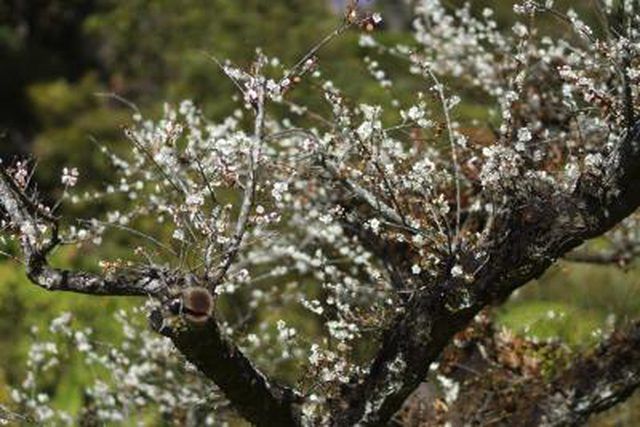Bulbs
Flower Basics
Flower Beds & Specialty Gardens
Flower Garden
Garden Furniture
Garden Gnomes
Garden Seeds
Garden Sheds
Garden Statues
Garden Tools & Supplies
Gardening Basics
Green & Organic
Groundcovers & Vines
Growing Annuals
Growing Basil
Growing Beans
Growing Berries
Growing Blueberries
Growing Cactus
Growing Corn
Growing Cotton
Growing Edibles
Growing Flowers
Growing Garlic
Growing Grapes
Growing Grass
Growing Herbs
Growing Jasmine
Growing Mint
Growing Mushrooms
Orchids
Growing Peanuts
Growing Perennials
Growing Plants
Growing Rosemary
Growing Roses
Growing Strawberries
Growing Sunflowers
Growing Thyme
Growing Tomatoes
Growing Tulips
Growing Vegetables
Herb Basics
Herb Garden
Indoor Growing
Landscaping Basics
Landscaping Patios
Landscaping Plants
Landscaping Shrubs
Landscaping Trees
Landscaping Walks & Pathways
Lawn Basics
Lawn Maintenance
Lawn Mowers
Lawn Ornaments
Lawn Planting
Lawn Tools
Outdoor Growing
Overall Landscape Planning
Pests, Weeds & Problems
Plant Basics
Rock Garden
Rose Garden
Shrubs
Soil
Specialty Gardens
Trees
Vegetable Garden
Yard Maintenance
Flowering Plum Tree Facts
Flowering Plum Tree Facts. Flowering plums are related to standard orchard fruit trees, and many species produce edible fruit; however, flowering varieties are grown primarily for their graceful appearance and colorful foliage. Fragrant, showy blooms make an appearance before the first leaves in late winter or early spring. Flowering plums are...

Flowering plums are related to standard orchard fruit trees, and many species produce edible fruit; however, flowering varieties are grown primarily for their graceful appearance and colorful foliage. Fragrant, showy blooms make an appearance before the first leaves in late winter or early spring. Flowering plums are suitable for growing in U.S. Department of Agriculture plant hardiness zones 6 through 9, but some may tolerate cooler temperatures in USDA zone 5.
Flowering Plum Varieties
Depending on the species, flowering plum may display foliage from dark green or copper to deep red or purple. Double or single blooms are usually white but may be pink or rose. One common flowering plum is Blireana (Prunus x blireana), a graceful tree that reaches heights of 20 to 25 feet and grows in USDA zones 6 through 8. Dwarf red-leafed plum (Prunus x cistena) is a dainty shrub that reaches mature heights of 6 to 8 feet and grows in USDA zones 4 through 9. The leaves of dwarf red-leafed plum emerge bright reddish-purple, maturing to a deep, coppery purple. Single white flowers provide stark contrast to the vivid foliage.
Uses in the Landscape
Flowering plum is usually planted to add grace and color to the landscape, either as single a specimen or in groups. The tree is a favorite in the home garden and is also seen planted along municipal parks or sidewalks. Small, dwarf varieties are suitable for planting in a large container filled with a well-drained potting medium. Flowering plums are low-maintenance trees, but the wilted flowers create litter when they drop from the tree in late spring.
Caring for Flowering Plum
A young flowering plum requires regular water during warm weather. Provide 1 inch of water every week during the first one to two years, using a drip system or soaker hose. Thereafter, flowering plums are drought-tolerant but benefit from a deep watering to soak the roots when weather is hot and dry. The tree benefits from a high nitrogen, 16-8-8 fertilizer in late autumn or early spring. Avoid feeding in summer because new growth is more susceptible to winter damage. Measure the tree and apply fertilizer at a rate of 4 ounces for each foot of height. Always water deeply after applying fertilizer. Prune flowering plums immediately after blooms fade in early spring. Prune lightly to maintain a neat appearance and cut out old, twiggy or damaged growth to allow sunlight to reach the center of the tree.
Pests and Disease
Many pests, including scale insects, mites and aphids, are controlled by applying horticultural oils in spring, which kill pests that overwinter on the tree. Mix the oil at a rate of 2 to 4 tablespoons per gallon of water and spray the entire tree, including the tops and bottoms of leaves. Black knot, a fungal disease indicated by black, knot-like swellings, is a common, widespread disease that often affects flowering plum trees. Prune affected areas immediately to prevent spread of disease. Remove the affected area plus an additional 2 to 4 inches and dispose of the prunings in a covered receptacle or bag. To prevent the spread of disease, always sanitize pruning tools by wiping the blade with rubbing alcohol or a mixture of 1 part bleach and 10 parts water. Most diseases, including powdery mildew and root rot, are prevented by careful watering. Always let the top 3 to 4 inches of the soil dry between waterings to prevent soggy soil.